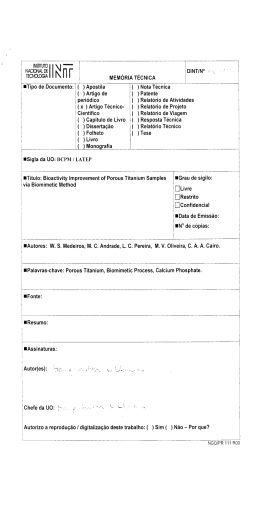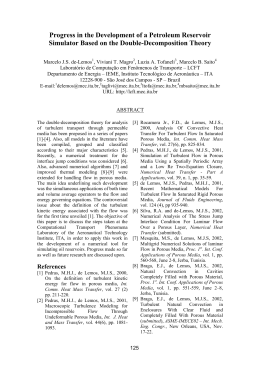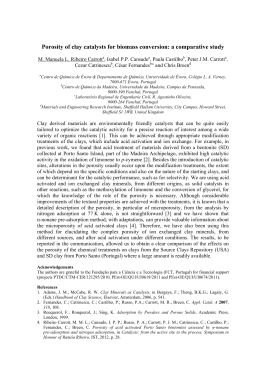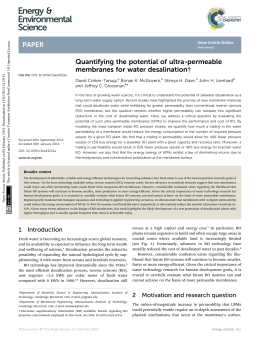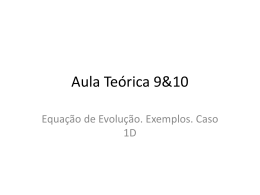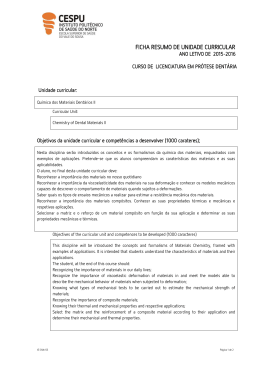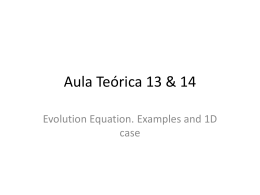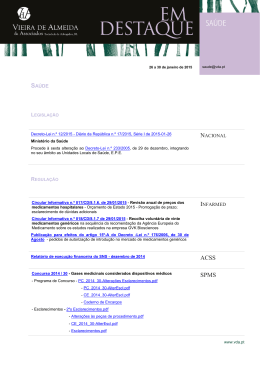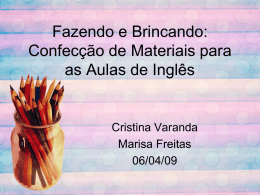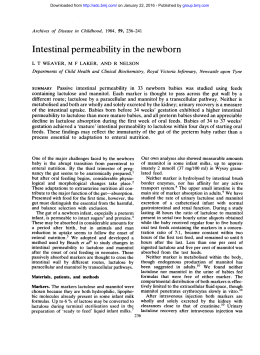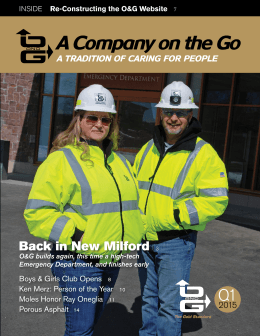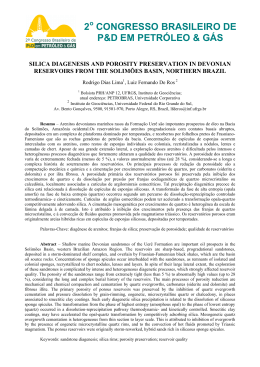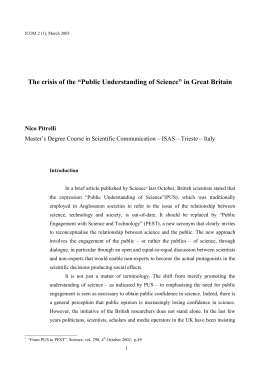120 Revista de F sica Aplicada e Instrumenta c~ ao, vol.14, no. 4, Dezembro, 1999 A Simple Apparatus for Determining the Permeability of Thin- Thickness Porous Materials by Pressure-Decay Technique Rerison A. Vasques1;2 , Murilo D.M. Innocentini3 and Odilio B. G. Assis1 1 Embrapa Instrumentation Research Center Rua XV de Novembro, 1452 - C.P. 741, 13560-970, S~ao Carlos, SP Email:[email protected] 2 PPG Interunidades Eng. Ci^encia dos Materiais - USP, 13560-970, S~ao Carlos, SP 3 Depto de Engenharia de Materiais - UFSCar, 13565-905, S~ao Carlos, SP Recebido em 02 de dezembro de 2000. Aceito em 13 de dezembro de 2000. A simple experimental set up, for the evaluation of the permeability of thin-thickness porous material, is presented. The proposed system makes use of a perpendicular uid ux that at controlled pressure can permeate the medium. The permeability variables are estimated by measuring the relative pressure before and after the uid permeates the sample. A special mortise holder was constructed to allow xation of thin samples. Vitreous membranes with dierent volumetric porosities were tested validating the system. The permeability parameters were obtained by using Forchheimer equation by considering the porous structure as consolidate one. Uma montagem simples, para a medida da permeabilidade em materiais porosos de espessura na, e apresentada. O sistema proposto faz uso de uma c^amara de permeac~ao com uxo perpendicular a amostra. As variaveis de permeabilidade s~ao conseguidas pela medida da diferenca de press~ao antes e apos o uido permear o meio. Dispositivo especial de encaixe foi desenvolvido para xac~ao das amostras independente de sua espessura. Membranas vtreas com diferentes porosidades foram ensaiadas validando a montagem. Os par^ametros de permeabilidade foram obtidos pelas equac~oes de Forchheimer considerando o meio poroso como uma estrutura consolidada. I Introduction Porosity and permeability are interchanged parameters that are of fundamental importance in porous systems characterization. All open-pore materials present degrees of permeability, which can, in a rst instance, be understood as the facility of a uid to ow through a medium. The correct evaluation of permeability is very important in a broad range of physics and engineering elds such as soil science, particulate systems, reactive reactor medium, fabrics, porous ceramic and lter processing and their applications. The usual devices for permeability measurements essentially consist in a set up where a uid is forced to pass through a dene volume of the porous medium. The permeability determination is done by following the distribution of pressure along the sample length, as illustrated in Figure 1. Figure 1. Permeameter measurement principle. This methodology is well established and has been widely used for non-consolidated materials that can be packed into a column along of which manometers could be placed. This is not appropriate, however, for thinthickness samples due to the diÆculty to handle or to measure the pressure at specic positions. In the literature, other techniques for permeability measurements suitable for thin samples as radiation incidence [1], image analysis and reconstruction 121 R erison A. Vasques et al. [2], electric conductivity measurements [4] and photoacustic methods[5] are reported. These methodologies however, need specic instrumental support, being rather sophisticated than the pressure-decay technique. In this work we present a simple experimental apparatus, based on the principle of pressure drop, which is suitable for thin-thickness sample permeability measurements. II Experimental Details The experimental set-up is based on the dierence of pressure taken in one point before and one after a uid (air or water) is inputted to the sample. The sample should be close to rectangular or to cylindrical form and having parallel faces. A jig was devised to enable the xation of the sample in the holder without mechanical pressure. The holder is located in a middle distance between the pressure gauges that are xed along the chamber, allowing measurements independent of specimens thickness. The working area could as well, be adjusted by using metallic mortise rings with dierent diameters. Small amount of silicon grease is necessary to x the sample. A long feeding tube connected to the sample holder attains the maintenance of a steady uid ux condition during the measurements. This tube assures the reduction of the turbulence around the measuring points. Figure 2 schematized an overview of the assembled system and Figure 3 presents details of the developed sample holder. The metallic ring (5) in Figure 3 can assume several forms and lengths adapting to the sample's shape or thickness. Figure 2. Diagram representative of the sample holder. For testing the system we make use of sintered porous glass membranes processed in the Embrapa Instrumentation Center [6]. The samples have disk shape with 35 1 mm. Membranes with dierent volumetric porosities, previously characterized by mercury penetration, had their permeability evaluated. Permeability constants were obtained by tting Forchheimer's equation to experimental values of P , measured using electronic extensor gauges (1 and 2 in Fig. 2), versus the uid surface velocity. The permeameter was assembled to allow working both in air or water. In the present work we use compressed air at room temperature. The air density was taken as = 1.079 kg/m3 and the viscosity = 1:83 10 5 Pa.s. Tests were carried in duplicate to guarantee the data repeatability. Comparisons of experimental and theoretical permeability parameters were also performed. III The Forchheimer's Equation Several theoretical approaches have been used to describe and predict the permeability of a medium [7,8]. The Forchheimer's equation is the result of a model that has been successfully employed to quantify the permeability of non-consolidated granular porous media [9-11]. Such model states that for an uncompressible uid the pressure drops through rigid and homogeneous medium is given by: P = s + 2 (1) L k1 k2 s where s is the uid velocity, L is the medium thickness, and are the uid viscosity and uid density respectively, and k1 and k2 are constants only dependent on the medium properties, known respectively as Darcian and non-Darcian permeabilities. Ergun [12] proposed expressions to describe k1 and k2 for packed spheres as follows: Figure 2. Sketch of the experimental set-up, out of scale. 3 2 k1 dp = 150(1 )2 (2) 122 Revista de F sica Aplicada e Instrumenta c~ ao, vol.14, no. 4, Dezembro, 1999 k2 and 3 dp = 1:75(1 ) (3) (4) = 1:5(1 ) d0 where is the porosity, dp is the mean particle diameter of the granular medium and d0 the medium porous size. To apply these equations in consolidated materials, with congured cell structures such as ceramics, we should replace the particle diameter (dp ) in equations (2) and (3) to the average pore diameter. The porous medium can be considered as a mutually interconnected composed material, as the solid and void phases are both three- dimensionally connected in space [13,14]. By equation 4 is possible to relate the pore medium size as proportional to particle dimension that compose the medium. That has been proved as a useful approach in several media [15-16]. dp IV Results and Discussion ibility. The permeability constants were obtained by tting equation (1) to the data. Numerical results are summarized in Table 1. The curves indicate reduction in P as the volumetric porosity increases. In sample 3 and unexpected drop in P was found for all air velocity. That feature was attributed to intrinsic characteristics of the material, where blind pores instead of open-pore structure essentially compose the volumetric porosity. Figure 3. Plotted data of P (pressure-drop measured between gauges) in function of uid velocity for the samples tested. The numbers identify the samples as put in Table 1. Figure 3 shows experimental pressure-velocity curves as result of the technique, considering the uid compressTable 1 - Permeability Constant for the tested samples with dierent volumetric porosity. Sample Volumetric Darcian Permeability, Non-Darcian k1 =k2 Porosity (%) k1 (m2 ) Permeability k2 (m) (m) 1 24.53 6.36 E-12 1.38 E-6 4.64 E-6 2 26.58 7.02 E-11 1.06 E-5 6.62 E-6 3 29.40 1.3 E-11 6.12 E-6 2.12 E-6 4 32.89 2.021 E-11 4.47 E-6 4.52 E-6 5 34.27 5.1 E-11 6.19 E-6 8.24 E-6 In general, the results obtained in the system are coherent and data reect dierent permeability levels as the volumetric porosity increases, as can be depicted from derivative values of k1 as presented in Figure 4. Similar behavior is found to k2 . From equations (2) and (3) a graphic correlation between experimental and theoretical values can be done, validating the use of the system particularly dening the interval of permeability where the system is less sensitive. This correlation can be observed in Figure 5 to k1 . Similar plot is found to k2. These results indicate good concordance between values of k. The maximum deviation in the measurements, in the order of 30%, was found for high uid velocity condition or for high permeability materials. These deviations point to the necessity of adapting the system for these types of measurements. Figure 4. Darcian permeability in function of the membranes volumetric porosity. R erison A. Vasques et al. Figure 5. Correlation between theoretical and experimental k1 , measured in the system. V Conclusions The proposed set-up allows the determination of the permeability values of thin- thickness porous materials. In the tested examples, the results showed good concordance between increase of volumetric porosity and correspondent permeability. By using Forchheimer's model it was possible to dene pressure or permeability range where the system works better. Acknowledgements The authors would like to thank FAPESP and SEP-Embrapa for nancial support. References [1] K. Meyer, P. Lorenz, B. Bohl-Kuhn, P. Klobes. Cryst. Res. Technol. 29[7] (1994):903. 123 [2] J. Koplik, C. Lin, M. Vermette. J. Appl. Phys. 56 (1984): 3127. [3] J. Daily, D. Harleman, Fluid Dynamics. AddisonWesley, Reading, Massachusetts, 1996. [4] J.F. Clements, J. Vyse. Trans. of The British Ceramic Soc. 67 (1968):285. [5] J.P.; Monchalin, L., Bertrand, G. Rousset, J. Appl. Phys. 56[1] (1984):190. [6] O.B.G.; Assis, L.C. Claro. J. of Non-Crystalline Solids. 247 (1999):237-240. [7] A. Scheidegger, The Physics of ow through porous medias. University of Toronto, 1960. [8] F. MacDonald, M.F.S. El-Sayed, K. Mow, F.A.L. Dullien. Ind. Eng. Chem. Fundam. 18[3] (1979): 199. [9] S. Liu, A. Afacan, J. Masliyah. Chem. Eng. Science 49[21] (1994): 3565. [10] J.P. Du Plessis, J.H. Masliyah. Flow through isotropic granular porous media. Transport in Porous Media, vol. 6, 1991 p. 207. [11] S. Ergun, Chem. Eng. Progress 48[2] (1952) 89. [12] R. M. Orenstein, D.J. Green. J. of the Amer. Ceram. Society 75[7] (1992): 1899. [13] M.D.M. Innocentini, W.L. Antunes, J.B. Baumgartner, J.P.K. Seville, J.R. Coury. Materials Science Forum 299/300 (1999):19. [14] M.D.M. Innocentini, V.R. Salvini, A. Macedo, V. C. Pandolfelli. Materials Research, 2[4] (1999): 283. [15] M.D.M. Innocentini, A.R.F. Pardo, V.C. Pandolfelli. J. Amer. Ceram. Society. 83[1] (2000): 220. [16] R.A. Vasques. MSc Thesis. Interunidades Eng. Ci^encia dos Materiais, USP, S. Carlos, SP., 125p., 2001.
Download
